Positive Health Online
Your Country

7 Reflections on Art and Touch
by David Lauterstein(more info)
listed in bodywork, originally published in issue 246 - May 2018
#1 Wrestling With The Angel
“May this wrestle and dance we do with dis-ease, with dis-position, and with destiny help people smile with joy at the music they can make of their lives.“
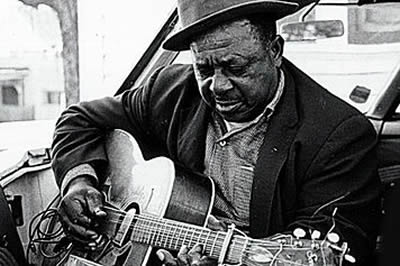
Big Joe Williams
Having been an artist, working first in music, then in bodywork, for now for over 50 years, I have met many wrestlers - clients wrestling with their lives, students, teachers, and therapists. And I’ve been fighting the good fight myself these years as well. The first person I ever saw wrestling artistically with desperation and delight was the great bluesman, Big Joe Williams.
First Big Joe had invented a one-of-a-kind 9-string guitar that itself was an unruly version of an instrument - with odd tuning pegs and ends of strings flying off in all different directions. He played the nine-stringed guitar with ferocity. When he would begin to play he would grimace and fret. None of his parts seemed to cooperate. His fingers, his right and left hands, the strings, the whole instrument, and the sound would be at odds with each other. No doubt his mind and emotions were also in some kind of creative turmoil wresting with the angel or maybe with the devil - who knew?
But after a while, Big Joe’s struggles would ease up some. You’d see a hint of a smile pass over his face. Slowly things came into focus. You almost could see the fingers of his two hands beginning to have a creative relationship. The guitar would move with his body in a more rhythmic way. Finally, he would look up and share his success with audience members. He’d smile at them and then he would smile at his fingers and his guitar. It was strikingly like someone proud of the woman he was with. You could see that he somehow did not fully identify with the music he was creating. It was arising of its own accord - like watching one’s child dance beautifully - there is a reflected pride, but it’s not you. When Big Joe played great, he was as much the pleased witness to that as were his listeners.
When I’m doing a session of deep massage, sometimes the image of Big Joe floats into my mind and as well as that of Jacob wrestling with the angel.
This struggle to tap into the goodness, truth and beauty of ourselves, our instruments, these miraculous hands, and the ultimate wild medium, this living, naturally self-transcending human who is our client - this is the struggle that makes us therapists grimace and delight. The client’s destiny is out of our hands - but maybe this wrestling and dance we do with dis-ease, with dis-position, and with destiny helps this person smile with joy at the music they can make of their life.
..and maybe right then the angel of Big Joe Williams is smiling down at you both...
#2 What The Hands Tell Me
“A Symphony must be like the world – it must contain everything”. – Gustav Mahler
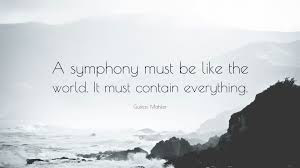
Gustav Mahler, in his Symphony #3, gave titles to the various movements:
- “What the Flowers in the Meadow Tell Me”;
- “What the Animals in the Forest Tell Me”;
- “What Man Tells Me”;
- “What the Angels Tell Me”;
- “What Love Tells Me”.
When we perform our science-based art of massage, we must hear what our client tells us. Each person’s life is a symphony of themes and variations - so many voices, movements, dreams and reflections.
- What the bones tell us - through their eons-long evolution of form and function - about how we relate to gravity, how we reach up to heaven;
- What the muscles tell us in their interface with the nerves, the capacity for efficient, beautiful, purposeful, life-sustaining movement;
- What the systems of the body have to tell us - about how water and air is our essence, and how it’s directed rhythmically as nourishment throughout our being;
- What our emotions tell us about times in the jungle and in the plains, about what we love, hate, desire, care about;
- What our mind tells us about the virtues and challenges of self-reflection. How to consciously dream and how to fulfil dreams through the coordination of thought, feeling and action.
Deep down the themes are common. We have this common miraculous substrate - the ‘same’ bones, muscles, tissues, etc. When we help the person remember this archetypal layer of themselves - how they share in the wisdom of millions of years of evolution and bodymind creation - they feel reconnected to the nourishment flowing through this tree of life that we are all a part of.
Then there is the sense of what just this one client here tells me - his or her story - how life’s stresses, successes, and surprises have accumulated into just this body of strength and weakness, just this heart’s hopes and despairs, just this mind’s answers, questions, and confusions.
What themes is this person living out? What variations provide the counterpoints within their living polyphony? How can we help harmonize these melodies of being so that person can fully hear themselves again?
What the client tells us, what our hands tell them; these constitute the profound on-going story of the role of touch throughout human evolution - What Touch Tells Us.
#3 What Is Better Than A Guitar?
“The human hand, in concert with the mind and heart is the most sophisticated instrument in the known universe.”
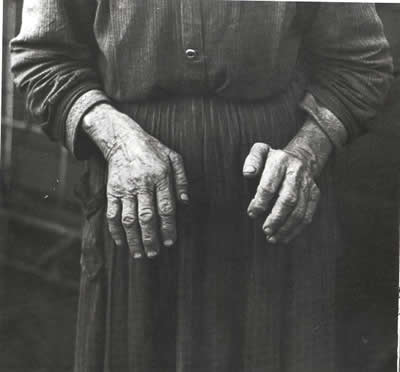
For the first thirty years of my life, I was a musician and composer. Among my first loves was the guitar and its music made through the wonderful composition of metal strings, wood, and open space. I am still thrilled with the sight and sound of the guitar and all the variants that have been made over time - the lute, lyre, harp, mandolin.
Imagine a beautiful guitar that could change into a flute and then become a piano and then a wonderful drum. The love of music led me almost simultaneously to the love of the human hand. As a child, I saw an illustration in the book, The Family of Man. It was a picture of an old woman’s hands. You could just feel all the things she had done with them over the course of her life - cared for loved ones, helped feed them, cleaned the home, worked in the fields, facilitated birth, consoled people through sickness and even death.
The use of the hands unites us with the labors of all humankind through time. Ever so gradually, our hands evolved over hundreds of million of years; freed from having to support us on the ground; freed to grasp and manipulate; thus, freeing our mouth from the grasping function, and so giving us the capability that became speech and song.
With the role of the hand in articulate action, the mind was freed further to allow the development of new structures and functions making possible more and more complex interactions with the environment and with each other.
“…the hand is not only the organ of labor, it is also the product of labour. Only through labour, through constant adaptation to new operations, through inheritance of the special development thus acquired of muscles, ligaments and, over longer periods of time, bones as well, and by the ever-renewed use of this inherited refinement in new, increasingly complicated operations, has the human hand attained that high degree of perfection that has enabled it to conjure into being the paintings of a Raphael, the music of a Paganini.” – Friedrich Engels
The human hand, in concert with the mind and heart, is the most sophisticated instrument in the known universe. In the art and science of massage, we have the privilege to use this greatest of all instruments. An evolved miracle is brought to bear every time we touch in a thoughtful, heartfelt manner.
This instrument indeed is self-transforming through the use of knuckle, fist, fingertips, pads, heel of hand, and palm. It is guided through the imagination and conscious thought of the cerebrum, the emotional intelligence and passion of the limbic system, supported by body movements coordinated with the cerebellum and the incredibly complex development of proprioception through each muscle, tendon and joint.
With our continually renewed appreciation for the miracle of the hand, we know we touch using a miracle of mind and body, united through all of human history with the common and extraordinary labors of our ancestors. We all are the receivers and givers of this blessing conveyed in space and through the vast reach of time that is the human hand.
#4 The Art Of Meeting
“This is indeed that unknown person I was - and so close to me!” – Jacques Riviere
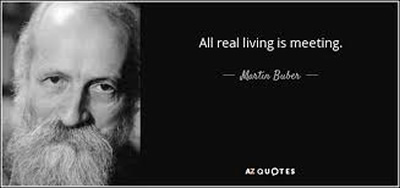
Today I took a walk at dawn. I took a walk just where the night meets the day.
The philosopher and teacher, Martin Buber, said it is not the educational intention but it is the meeting which is educationally fruitful. In therapy, we can say also it is not the therapeutic intention, but it is the meeting which is therapeutically fruitful. Indeed studies have shown it is the client-therapist relationship quality that is the best predictor of positive therapeutic outcomes. Each sense has a place of meeting - the place where the sound can first be heard, the place where we first see something illuminated by light - and every time we’re met, whether by sound, smell, light, or touch, we come to a point of awakening - with conscious contact we wake up. We come to the meeting point where we identify the smell, the taste, the voice, the touch.
When the moon hits your eye like a big pizza pie that’s Amore.
Well, we’re not precisely looking for amore, but it is certainly common to see the restoration of self-appreciation, of self-love as the client meets him/herself again through our touch-reflection.
“This is indeed that unknown person I was –
and so close to me!” – Jacques Riviere
It is said that the Buddha upon being asked if he were enlightened, refused all claims except to say “I am awake”.
Experimentally finding just the right pressure is a large part of the art of massage - whether it be the right touch quality for this person here of a butterfly or a gentle wave or a paw or a pointer or a fist - everything we do becomes a call to consciousness. Everything we do becomes an opportunity for awakening. Soft tissue manipulation has its limits as our definition; rather what if we were just pointing, pointing the way here, here, here, we meet.
The poet Issa said, “The man pulling radishes, points the way with a radish.”
We point the way with our carefully chosen pressures.
#5 Accuracy
“Art and Science cannot exist but in minutely organized Particulars” - William Blake
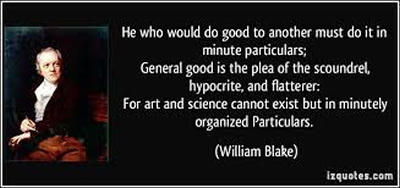
One of the legs we stand on is the knowledge the biological sciences give us. If we can’t find a love and fascination for anatomy, we probably have no business being massage therapists. All the modalities bandied about to great acclaim and profit are mostly simply applied anatomy. All our ideas arise from this great form, the human body.
Therefore, simple accuracy goes a long way in creating therapeutic benefit and the artful experience of touch. This develops in several steps, each of which we repeat when we learn anything new.
- First comes imitation. We repeat the words our teacher or textbook present us with. We observe and imitate what they show in palpation.
- Second comes memorization. I see many students wanting to jump over this step. But the act of placing something like the words and notes of a song in your mind so that they take up residence in your mind, body and soul is a giant step. Placing the visualization and words for each muscle’s origin, insertion and action is a sacred obligation.
- Third comes embodiment. You know the anatomy so well that you don’t have to ‘think’ about it to have accuracy in your touch. Your work has “a hesitant touch which doesn’t make mistakes anymore”. In other words, some of your anatomical knowledge now resides comfortably within the cerebellum where our movement programs are stored.
- Fourth comes therapeutic relationship. When we do not need to spend much energy consciously recalling where the muscles are and what they do, then we are free to let more of our awareness be devoted to understanding this unique person and how we need to touch them to be of optimum service.
Like a muscle - what might be the details of the origin of this individual client’s pain and tension and strength? Now that I can pluck the notes in the sinews with accuracy, what is going to be the healing music? Each session is a call-and-response. It is this deep listening and nonverbal conversation that provides the most marvelous therapeutic results.
A study was done of people who improved with psychotherapy. They discovered that it was not correlated with the psychotherapeutic approach - be it gestalt, Freudian, bioenergetic, Jungian, etc. It was directly correlated with this - the quality of the therapeutic relationship of client and therapist. So exacting loyalty to the miraculous structure of the human body leads us ultimately to cultivating the optimum quality of relationship with the whole person, that results in the client’s restoring a deep experience of health throughout his or her own body, mind and spirit.
Are you not a miracle?!
Did You Know: In one square inch of our hand, we have nine feet of blood vessels, 600 pain sensors, 9000 nerve endings, 36 heat sensors and 75 pressure sensors!
Question - Why is it that touch is so powerful?
"No other sense deals as directly with the three-dimensional world or similarly carries with it the possibility of altering the environment in the process of perceiving it; that is to say, no other sense engages in feeling and doing simultaneously."
- Charles Moore - Body, Memory and Architecture -Yale University Press
#6 Eternity
“Dost thou love life? then do not squander time; for that is the stuff life is made of.” - Benjamin Franklin
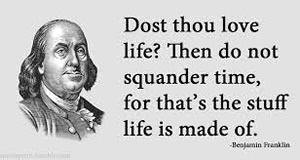
Time is what we are made of - in addition, of course to space.
Ida Rolf noted “gravity is the therapist” – meaning we derive the sense of balance from our relationship to gravity in space. To say that “time is the therapist” is equally true. Of course, we already say “Time is the great healer” - meaning superficially that, given the right amount of time, things will tend to heal themselves.
And what if, more deeply, it was also just like our relationship to space? - meaning, we derive the sense of balance from our relationship to time in life. All the times we’ve lived are part of us. Yet some of them hold us back and some pull us forward in time - just like body segments being ‘in’ or ‘out’ of place in structural alignment.
To be balanced in the present moment, yet supported fully by all our past and the dreams that give birth to our future - you might say supported by the destiny that lies before us - this is health in time, not just space.
So we are made of time and so is our therapy. The ways we make meaning with time are among the most profound elements of our art.
The magic, as in music, of how long a note or a stroke should last or how long a pause between notes or movements shall be held is one of the great mysteries we enjoy and explore as therapists each session.
Sometimes I am exploring the iliotibial band - i.t. Starting at the greater trochanter, I pause, establishing a clear sense of beginning in time. Then I begin moving down the i.t. band. For the first two-three inches, I may well take three or four seconds. Then I might slow down, going more and more slowly until it seems to the client, by the time I’m three-quarters of the way down this longest tendon in the body, that time itself has come to a standstill. Indeed there I will pause for a few moments - then resume slow, graceful movement finally reaching, after what seems like a long time, the end of the tendon.
I call it the “therapeutic use of eternity”. Because one thing we want is for our clients to step out of the relentless time of chronology, of “chronos” and enter the sacred time of “kairos”. “The ancient Greeks had two words for time, chronos and kairos. While the former refers to chronological or sequential time, the latter signifies a time in between, a moment of indeterminate time in which something special happens.”
In Eastern Orthodox Churches, before the service, they invoke “kairos” indicating that this special time is “an intersection with Eternity.” (Wikipedia).
Isn’t the whole massage indeed a time in between, a moment of indeterminate time in which something special happens?
#7 BREATH
“Everything must touch! Send feelers out, And love is like a vine, it is connecting us.”
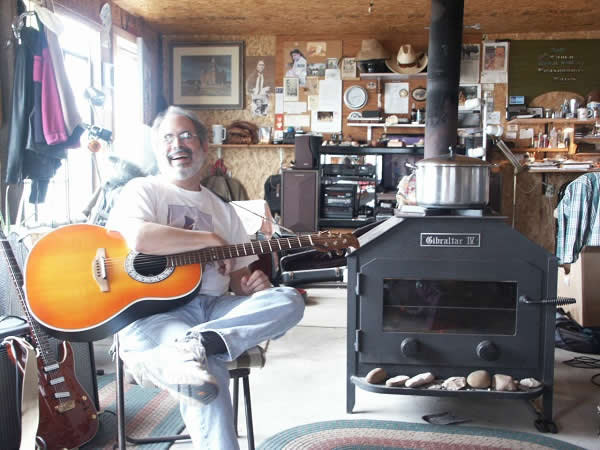
The author making music
What connects one touch with another? What role does breath play in the art of massage? In yoga, if we do the postures and movement without full breathing, it is of limited structural and energetic benefit. If we dance and don't breath fully and naturally, we move in a stilted way, So too if a therapist does a massage without fully and naturally breathing in and out, it's like song without the right rhythm, it feels held back, stilted, you don't feel like singing along. Without the free breath of life, the massage will likely not have a deeper therapeutic impact.
When we do and teach massage, too often the concentration is overly much on what we do with our hands. But - our energy doesn’t come from our hands! It comes from breath. Literally and figuratively, breathing fully in and out gives us aliveness in every cell, pulsation, and a sense of volume in our bodies as we move. Breath is the first and last nourishment. It is the breath with which we nurture and nourish our clients.
Plus the only inner rhythm that we have both conscious and unconscious control of is the breath. The brainstem gives us the basic breath but we also have learned habits and voluntary control through the cerebrum, the home of the conscious mind. Thus, through both the medullary and cerebral influence of breath, we access the explicit interface of both the conscious and the unconscious worlds. Respiration is the deepest physiological and anatomical function over which we have conscious as well as unconscious control.
The slow rhythm of freed, mindful breathing conveys a sense of grace. Just like the most wonderful, the warmest breeze, breath will convey exquisitely a sense of ease. It will be a slow rhythmic, living vehicle for taking an important vacation from the rhythms and tasks of everyday life.
To find the energy and responsive rhythm in a session with a client, we need to fully inhabit our own breath and be mindful of the depth and rhythm of theirs. Then the massage is a duet of breath. It is the experience of harmony between two people. The philosopher, Krishnamurti, said if six people would totally cooperate, the world would be instantly transformed. Maybe we can say, for the world to be transformed, perhaps first it just takes two.
The art of massage, like life itself, depends on the breath. Every touch, like every note in a song, is strung like a bead on this living bracelet, this miraculous vine of breath that connects us all.
For more general information, see
http://www.tlcschool.com/about/faculty/more-about-david-lauterstein/classes-appearances-books/ or email DavidL@TLCschool.com
Comments:
-
No Article Comments available